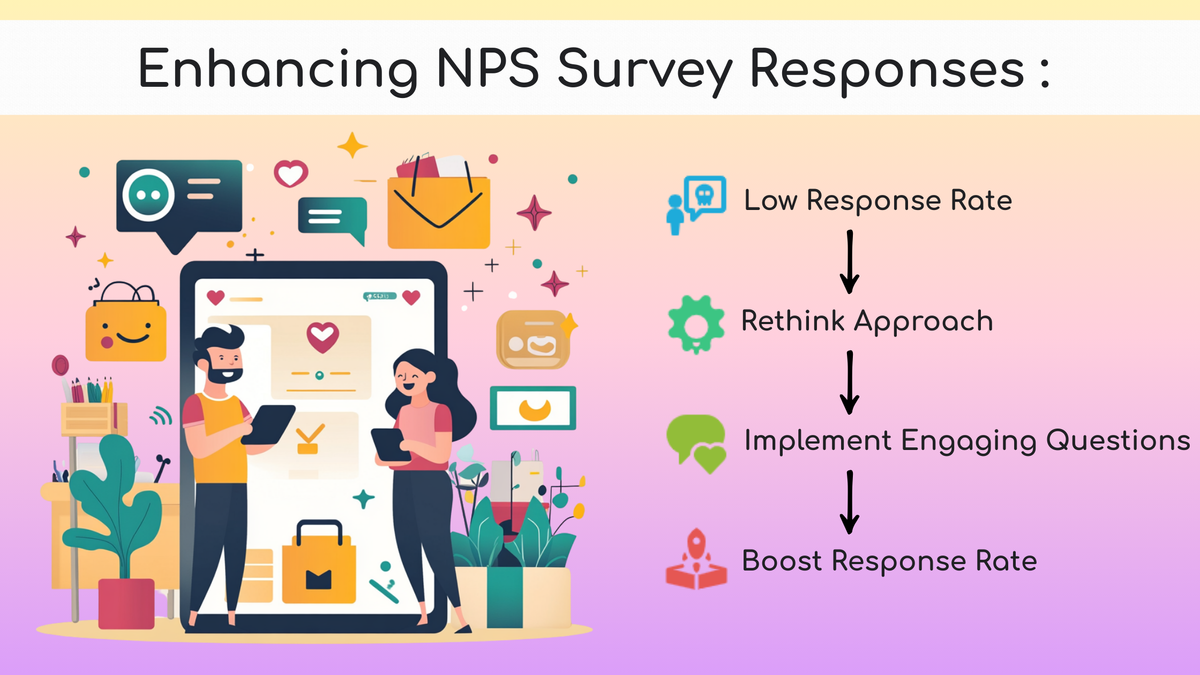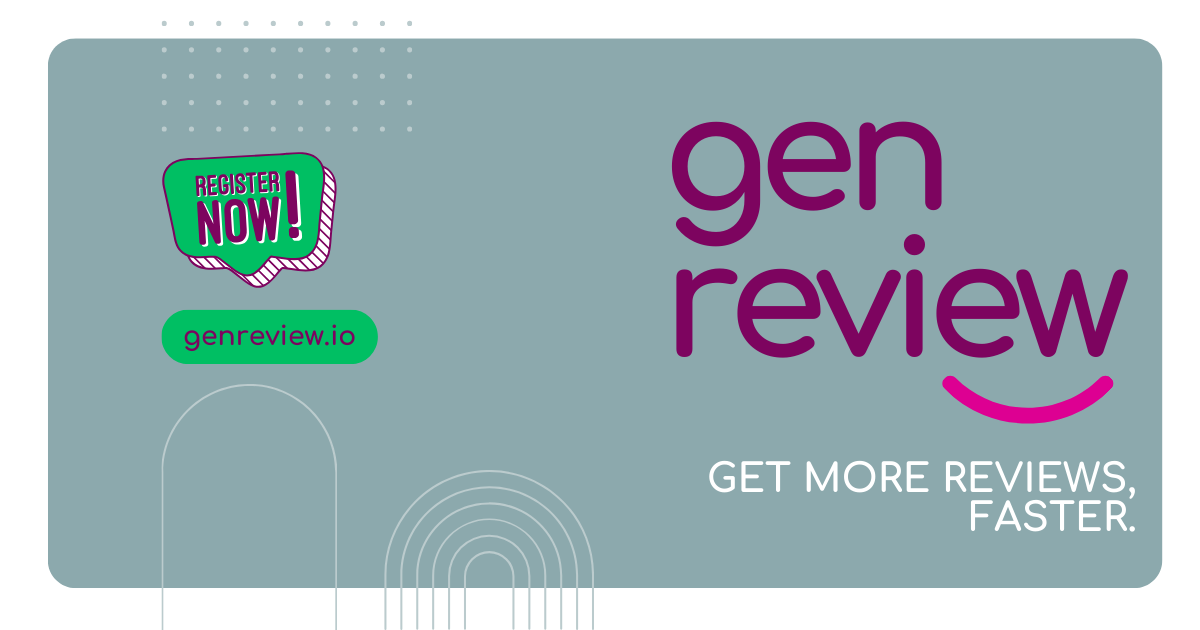Top NPS Survey Questions That Actually Get Responses
"Tired of low NPS responses? It's time to rethink your approach! Discover the top survey questions that engage customers, spark meaningful feedback, and drive real change for your shop."

Stop getting ghosted by your customers and start gathering feedback that drives the real change!
You send out an NPS survey.
You wait. You hope, and you get almost no responses.
It’s not because your customers don’t care. It’s because the way you're asking isn’t making it easy or interesting for them to answer. If you want real as well as usable feedback, now it’s time to rethink your approach.
Most NPS survey questions sound like they were written by robots for robots. They're boring. They're vague. And because of this customers feel like they're doing their job. But what if you could ask questions that make customers want to respond?
And here's the Good news, you can. And today, we’ll walk you through the top NPS survey questions that not only boost your response rate but also give you clear, actionable insights as well.
We’re going beyond the basic 0–10 score here. This is the real deal.
Why Most NPS Surveys Fail (and What You Must Do Instead)
The hard truth?
A boring NPS survey feels like spam.
If your survey looks like just another generic “rate us” email in a cluttered inbox, it’s heading straight for the trash.
The main reasons customers skip NPS surveys are:
- There are overly complicated formats - Nobody wants a mini-essay.
- Asked in impersonal wording -“Dear Valued Customer” feels cold.
- Timing mistakes - Asking for feedback right after a frustrating experience is a surefire way to get ignored (or worse, a bad review).
What to do instead:
- Write like a human, don’t give them the feeling of corporation.
- Make it frictionless: tap, click, done. Easy right?
- Trigger surveys at emotional high points (after a successful support call, a smooth purchase, etc.).
Now, let’s jump into the best NPS survey questions that break through the noise.
The Foundation: Start Strong with the Core Question
1. The Humanized NPS Score Question
Traditional version: "On a scale from 0 to 10, how likely are you to recommend [shop] to a friend or colleague?"
Better version for local stores:
"If your friend was looking for [fresh veggies / a great haircut / handmade gifts- whatever you offer], how likely would you be to send them our way? (0 = do not like all, 10 = Absolutely!)"
Because let’s be honest, in a small town or neighborhood, recommendations are the real MVP.
Why this matters: Framing the question like a casual chat between friends feels more genuine. In tight-knit communities, word-of-mouth is everything and people love being the one who "knows a great place."
Pro Tip: Mention the service or shop they bought from like “If your friend needed fresh bread, would you tell them about Bake Me Happy[Bakery Name]?” It makes the question feel personal, rather than coming from a robot.
Follow-Up Questions That Turn Scores into Stories
Getting a score is great. Getting a story is even better.
Here’s how to ask the right follow-up questions to discover the why behind the number.
Think of it like getting a cake on your birthday - nice, but getting a story behind the cake? That’s a next-level celebration.
2. “Can you tell us what influenced your score the most?”
Why it's better than "Why did you give us this score?”
It encourages customers to share specifics, whether it is customer service, pricing, shipping speed, or about quality.
Use it to:
- Spot patterns quickly.
- Identify what drives loyalty vs. what creates dissatisfaction.
Here’s a Tip: Leave a large text box, don't limit their ability to tell their story.
3. “What’s one thing you love most about your experience with us?”
This question invites positive emotional responses and people love talking about what makes them happy.
Why it works: Customers highlight not just what you’re doing right, but what you should never change. It also boosts your team's morale when you share glowing feedback internally.
Asking this is like fishing for compliments but with a purpose!
Use this insight to:
- Refine your messaging.
- Spotlight your strengths in marketing campaigns.
4. “If you could change one thing about your experience, what would it be?”
Framed as a single change, this makes the feedback manageable instead of overwhelming.
Key difference: Rather than opening the floodgates to negativity, you invite constructive input that feels safe and doable.
Here’s a pro move: Compile these suggestions into a quick wins list, many small tweaks create massive customer loyalty over time.
5. “Was there any point where you felt unsure, stuck, or confused?”
Asking about confusion or hesitation can unhide the friction points that standard satisfaction surveys miss.
We all have that moment where the “Confirm Purchase” button looks suspiciously like a trapdoor.
Why it's gold: Minor confusion (like unclear instructions or hidden fees) often snowballs into churn if left unaddressed.
The tip you need: After identifying common sticking points, prioritize quick fixes that immediately enhance the customer journey.
Context Matters: Match the Question to the Customer Journey
Generic surveys feel lazy. Contextualized surveys feel caring.
Like the difference between “Hey” and “Hey, how’s your dog doing after the surgery?” - context is everything.
Here’s how to target your questions at the right moments.
6. Post-Purchase NPS Question
"How easy was it for you to complete your purchase with us today?"
Instead of asking about overall satisfaction, zoom in on the actual purchase experience.
Why it’s strategic: A smooth checkout process dramatically affects your NPS.
Clunky checkouts? Silent churn.
Next step: If someone reports difficulty, trigger an immediate apology email with an offer to help.
7. Post-Onboarding NPS Question
"After completing onboarding, how ready do you feel to succeed with our shop's service?"
First impressions stick hard.
If customers feel overwhelmed after onboarding, they may ghost you before you even realize it.
Use onboarding NPS surveys to:
- Measure confidence levels.
- Identify missing links in your welcome flow.
- Offer extra support before frustrations turn into cancellations.
8. Post-Support NPS Question
"Thinking about your recent support interaction, how satisfied were you with how quickly we resolved your issue?"
Speed matters. Resolution quality matters even more.
This follow-up captures emotional sentiment right after a critical customer touchpoint.
Best practice: Follow up unhappy responses with a direct, personal email, not an automated apology.
Fresh & Unique Questions That Delight and Disarm
Surprise your customers in a good way and watch your response rates soar.
9. “In one word, how would you describe your experience with us?”
Why it’s powerful: It challenges customers to distill their feelings into a single, emotional punch.
Words like "frustrating," "awesome," or "smooth" offer immediate gut-check feedback.
10. “What would you miss most if you could no longer shop with us?”
Why it’s crucial: This question uncovers your real competitive advantage, the thing customers truly value about you.
Use it to:
- Highlight what makes you shop special
- Craft stronger marketing positioning around your most "missable" feature.
11. “What almost made you NOT choose us?”
Yes, it feels risky to ask this but brave questions yield powerful answers.
You’ll discover:
- Barriers to purchase you never considered.
- Competitors you didn’t realize you were up against.
Minor details (pricing, delivery time, guarantees) that nearly lost you the sale.
Act on it: Tweak your messaging to preemptively address these objections.
Micro-NPS: Tiny Questions with Massive Impact
Short, embedded questions can provide critical directional feedback without burdening the user. Here, 's how:
12. “Did you accomplish what you came here to do?”
Ask this after key milestones like booking a service, making a purchase, or completing a task.
Why it works: If the answer is “no,” you know where the process broke down without needing a 10-question survey.
13. “Was anything harder than it needed to be today?”
Simple, friction-focused, and easy to answer.
Use it:
- In checkout flows.
- After form submissions.
- Post account setup.
Identify snags and smooth them over for better customer retention.
14. “Would you be excited to use this again tomorrow?”
A direct pulse on how much delight (or dread) you’re creating.
If the answer is no: It is time to rethink onboarding, usability, or the emotional hook related to shops or stores.
Beyond the Ask: Closing the Feedback Loop
Once you get feedback, what you do next makes or breaks customer loyalty.
- Always thank customers for their time, even if the feedback stings.
- Highlight changes made based on feedback (and give credit).
- Segment responses and follow up appropriately, not all customers need the same response.
- Create public-facing "You Spoke, We Listened" updates, to show you're truly customer-obsessed.
Conclusion
NPS isn’t just a metric but it’s a window into your customers’ hearts and minds.
Asking the right questions in the right way boosts the following things:
- Deeper engagement
- Actionable insights
- Higher loyalty
- Stronger brand love
So don’t just send a boring survey. Instead, start a conversation your customers want to have.
And when you do, you’ll find the answers you’ve been searching for and maybe even a few game-changing ideas you never saw coming.
Tired of being ignored by your own surveys?
It’s time to leave the boring, robotic questions behind and start real conversations that customers want to respond to. The right NPS questions don’t just boost your response rate but also they uncover insights that can transform your business.
At GenReview, we help you build smarter, simpler, and more human feedback experiences that actually get results.
Let’s turn your customer feedback into your biggest growth driver.


